
Gerry Adams (Kelvin Boyes/Camera Press/Redux)
Price had been loosely acquainted with Adams since childhood. When they were both kids, she used to see him riding with his family on the same buses she did, to republican commemorations at Edentubber or Bodenstown. But now he had reappeared as a firebrand. The first time she recognised him on the back of a lorry, addressing a crowd, she exclaimed, ‘Who does Gerry think he is, standing up there?’ Price found Adams intriguing, and faintly ridiculous. He was a ‘gawky fella with big black-rimmed glasses’, she would recall, and he had a quiet, watchful charisma. Price was irrepressibly outgoing, but she found it difficult to get a conversation started with Adams. He carried himself with an aloof air of authority and referred to her, affectionately, as ‘child’, though he was only a couple of years older than she was. The day after Price sprang James Brown from the hospital, Adams expressed concern about her operational security. ‘It said in the paper that the women were not wearing disguises,’ he murmured, adding reproachfully, ‘I hope that isn’t true.’
Price assured him that the press account was inaccurate, because the sisters had been decked out in blonde wigs, bright lipstick and garish head scarves, ‘like two whores at a hockey match’. Adams took himself pretty seriously, Price thought. But she could laugh at anyone. For security, Adams did not sleep in his own home, and would bed down instead in various billets, some of which were not homes at all, but local businesses. He had taken to sleeping, lately, at a West Belfast undertaker’s. Price found that hilarious. She joked that he slept in a coffin.
‘It was an exciting time,’ she said later. ‘I should be ashamed to admit there was fun in it.’ But there was. She had only just turned twenty-one. Another family might disapprove of what Dolours and Marian were doing, but to Albert and Chrissie Price, there was a sense in which the girls were simply taking up a household tradition, and while you could blame a man for hitting someone, you could not blame him for hitting back. ‘The Provo army was started by the people to set up barricades against the loyalist hordes,’ Albert explained at the time. ‘We beat them with stones at first, and they had guns. Our people had to go and get guns. Wouldn’t they have been right stupid people to stand there? Our people got shotguns at first and then got better weapons. And then the British, who were supposed to protect us, came in and raided our homes. What way could you fight? So you went down and you blew them up. That was the only thing left. If they hadn’t interfered with us, there probably would be no Provo army today.’
When British troops were killed, Albert would freely acknowledge the humanity of each individual soldier. ‘But he is in uniform,’ he would point out. ‘He is the enemy. And the Irish people believe that this is war.’ He was against death, he insisted, but ultimately this was a question of means and ends. ‘If we get a united socialist Ireland,’ Albert Price concluded, ‘then maybe it will all have been worth it.’
As if to underline the futility of nonviolent resistance, when Eamonn McCann and a huge mass of peaceful protesters assembled in Derry one chilly Sunday afternoon in January 1972, British paratroopers opened fire on the crowd, killing thirteen men and wounding fifteen others. The soldiers subsequently claimed that they had come under fire and that they only shot protesters who were carrying weapons. Neither of these assertions turned out to be true. Bloody Sunday, as it would forever be known, was a galvanising event for Irish republicanism. Dolours and Marian were in Dundalk when they heard reports of the massacre. The news filled them with an overpowering anger. In February, protesters set fire to the British embassy in Dublin. In March, London suspended the hated Unionist parliament in Northern Ireland and imposed direct rule from Westminster.
That same month, Dolours Price travelled to Italy to speak in Milan and help to spread the word about oppression of Catholics in Northern Ireland. She lectured about ‘the ghetto system’ and the lack of civil rights. ‘If my political convictions had led me to take part in murder, I would confess without hesitation,’ she told an interviewer, employing the sort of deliberately evasive syntactical construction that would become typical when people described their actions in the Troubles. ‘If I had been commanded to go to kill an enemy of my people I would have obeyed without the slightest fear.’ In a photograph from her appearance there, Price posed like an outlaw, with a scarf pulled across her face.
5
The McConville family had two dogs, named Provo and Sticky. After Arthur passed away, his oldest son, Robert, might have stepped in to assume responsibility for the family, but in March 1972, when he was seventeen, Robert was interned on suspicion of being a member of the Official IRA – the Stickies. Jean McConville, who had been delicate by temperament to begin with, fell into a heavy depression after her husband’s death. ‘She had sort of given up,’ her daughter Helen later recalled. Jean did not want to get out of bed and seemed to subsist on cigarettes and pills. Doctors in Belfast had taken to prescribing ‘nerve tablets’ – sedatives and tranquillisers – to their patients, many of whom found that they were either catatonically numb or crying uncontrollably, unable to get a handle on their emotions. Tranquilliser use was higher in Northern Ireland than anywhere else in the United Kingdom. In some later era, the condition would probably be described as post-traumatic stress, but one contemporary book called it ‘the Belfast syndrome’, a malady that was said to result from ‘living with constant terror, where the enemy is not easily identifiable and the violence is indiscriminate and arbitrary’. Doctors found, paradoxically, that the people most prone to this type of anxiety were not the active combatants, who were out on the street and had a sense of agency, but the women and children stuck sheltering behind closed doors. At night, through the thin walls of their flat in Divis Flats, the McConville children would hear their mother crying.
Increasingly, Jean became a recluse. Some weeks, she would leave the house only to buy groceries or to visit Robert in prison. It might have simply felt unsafe to venture out. There was a discomfiting sense in Belfast that there was no place where you were truly secure: you would run inside to get away from a gun battle, only to run outside again for fear of a bomb. The army was patrolling Divis, and paramilitaries were dug in throughout the complex. The year 1972 marked the high point for violence during the entirety of the Troubles – the so-called bloodiest year, when nearly five hundred people lost their lives. Jean made several attempts at suicide, according to her children, overdosing on pills on a number of occasions. Eventually, she was admitted to Purdysburn, the local psychiatric hospital.
Nights were especially eerie in Divis. People would turn out all their lights, so the whole vast edifice was swathed in darkness. To the McConville children, one night in particular would forever stand out. Jean had recently returned from the hospital, and there was a protracted gun battle outside the door. Then the shooting stopped and they heard a voice. ‘Help me!’ It was a man’s voice. Not local.
‘Please, God, I don’t want to die.’ It was a soldier. A British soldier. ‘Help me!’ he cried.
As her children watched, Jean McConville rose from the floor, where they had been cowering, and moved to the door. Peeking outside, she saw the soldier. He was wounded, lying in the gallery out in front. The children remember her re-entering the flat and retrieving a pillow, which she brought to the soldier. Then she comforted him, murmuring a prayer and cradling his head, before eventually creeping back into the flat. Archie – who, with Robert in prison, was the oldest child there – admonished his mother for intervening. ‘You’re only asking for trouble,’ he said.
Читать дальше
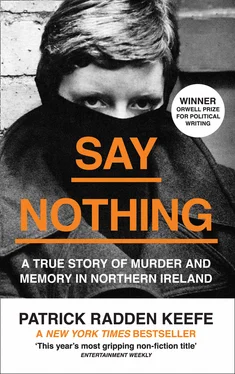

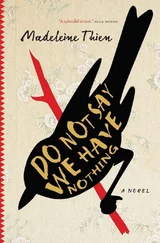


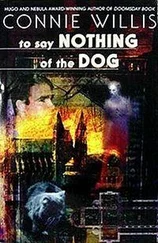
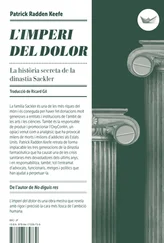
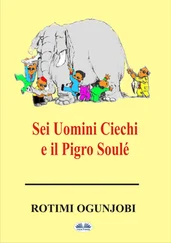





![Helen Rowland - The Widow [To Say Nothing of the Man]](/books/752764/helen-rowland-the-widow-to-say-nothing-of-the-man-thumb.webp)